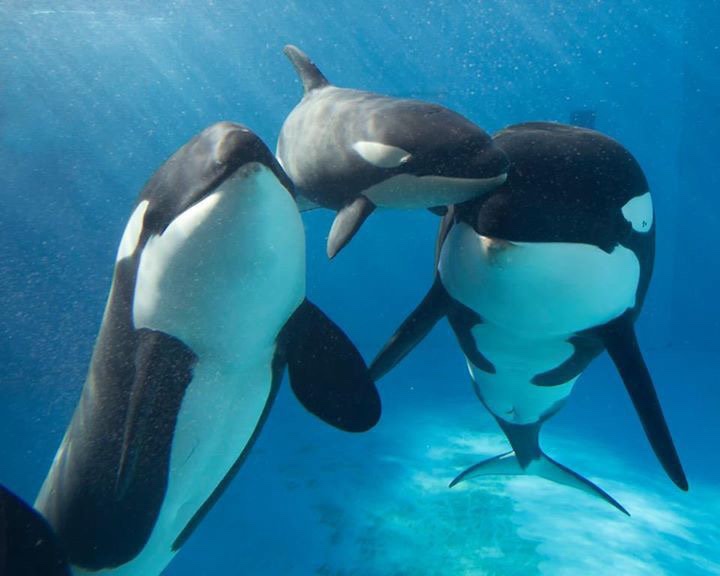Orca populations found around the world have been observed to differ morphologically, genetically, behaviourally, acoustically and culturally from one another. Some populations are separated geographically whilst others overlap in their home range. These different populations do not interbreed nor does breeding occur between different ecotypes (residents, transients and offshores). However, orcas from populations which would not naturally interbreed regularly have offspring in captivity. These animals, known as hybrids, have no conservational value. This is because these animals are genetically mixed and thus cannot be released into either population from which their parents originate from. These hybrids also lack scientific value as it’s not accurate to compare the behaviour of an unnatural hybrid to a genetically natural wild cetacean.
Captive breeding programmes have produced 96 calves. These calves consist of 64 natural purebreds and 32 unnatural hybrids. SeaWorld’s breeding programme alone is responsible for 19/64 (~30%) of the purebreds and 28/32 (~88%) of the hybrids in captivity.

Makani, an Icelandic-Argentinian transient hybrid, with Kalia and Amaya, two Icelandic-Southern resident hybrids, at SeaWorld San Diego. Photo submitted by Nadine – Corkyfan4193.
SeaWorld also had the only breeding programme in the world to have produced ecotype hybrids. 11 resident-transient hybrids have been produced in captivity (8 Icelandic-Bigg’s Transients hybrids and 3 Icelandic-Argentinian Transient hybrids) all of whom were a result of SeaWorld’s breeding programme. The parents of these hybrids would never meet in the wild nor would they ever interbreed. Some resident and transient orca populations do overlap in range in the wild, however, these ecotypes have been observed to display avoidance behaviours when they encounter each other in the wild. These behaviours clearly demonstrate how unnatural resident-transient hybrids are, and how SeaWorld cared more about producing the next generation of orcas to perform in cramped tanks than conservation and science.
Hybrids aren’t the only unnatural product of captive breeding programmes. Five inbred orcas have been born in captivity, three of which belong to SeaWorld. Although inbreeding can occur in the wild, it’s very rare as orcas have a repertoire of behaviours to prevent the occurrence of inbreeding. In captivity, there have been instances where inbreeding has been encouraged. In 2006, SeaWorld sent four related orcas to Loro Parque on breeding loan. It’s likely that SeaWorld was experimenting with inbreeding when this decision was made to determine what degree of inbreeding will start affecting the individuals.
Disclaimer: Calves who were conceived in the wild and unknowns have been excluded. Kohana’s calves have been included in SeaWorld’s breeding programme (rather than Loro Parque’s breeding programme) as she was under their ownership at the time of both births.